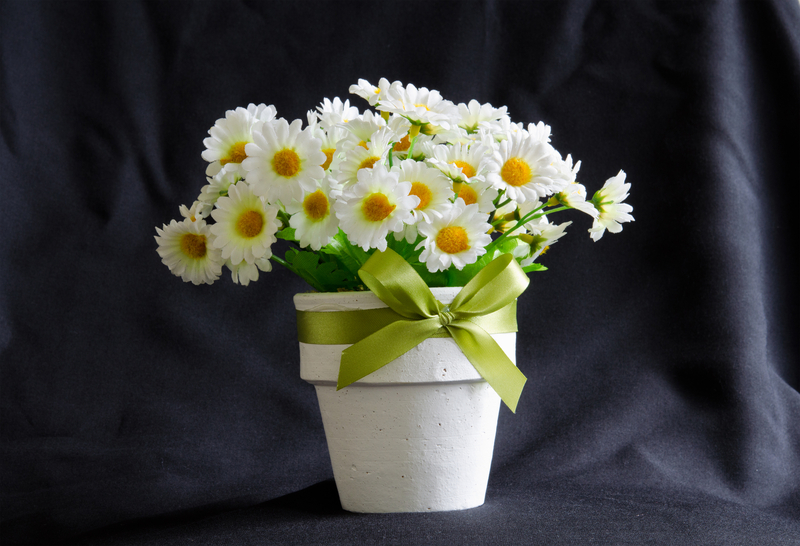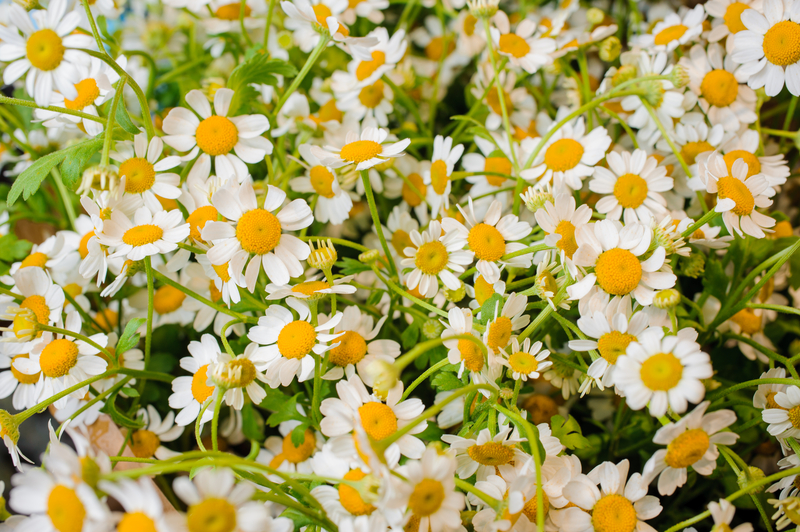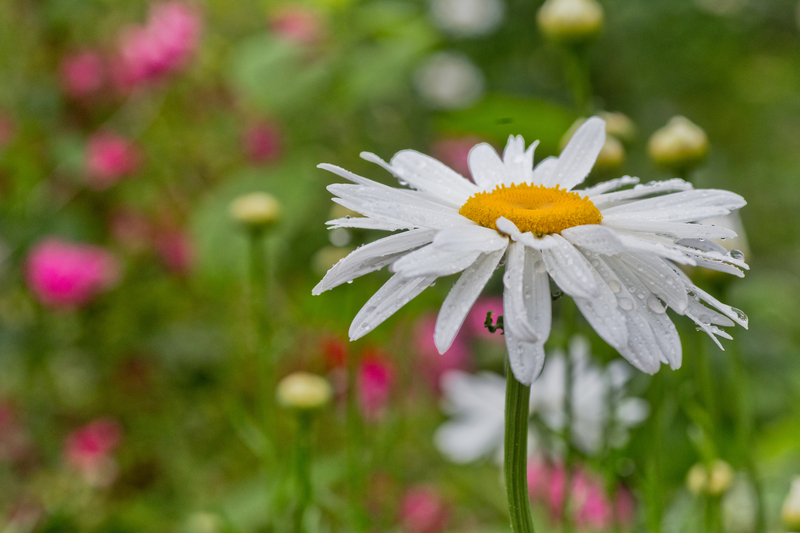Daisies are well-recognized, low-maintenance, and commonly-grown flowers. With a range of bright colors, this flower can bring a lot of color through its reliable blooms. Native to Europe, Africa, and North America, the name Daisy originates from an Old English term meaning “Day’s Eye,” as the flower is apt to open at the rise of dawn.
Most Known for
Though many recognize the white petaled and yellowed centered Shasta Daisy, not all daisies are the same. There are several varieties of this flower; some can thrive indoors while others will only survive outside. In addition, there are several combinations with a color palette ranging from white, pink, yellow, and orange with each variety. The petals also vary; some may have single petals, but others may be double, frilly, or ruffled.
Different Types
Daisies come in several well-known varieties:
- Common Daisy/English Daisy (Bellis Perennis): Provides a flat-disk bloom with a ring of white flowers around the yellow center.
- Oxeye Daisy (Leucanthemum vulgare): Are typically wildflowers found in fields and meadows.
- Blue Eyed Beauty (Osteospermum): A summer-long bloom that provides yellow petals with bright, purple centers.
- Pink Shimmer (Echinacea): These tall plants will provide pink blooms that grow 3-5 inch petals.
- Painted Daisy (Tanacetum Coccineum): Another variety of tall plants with a range of colorful blooms.
- Marguerite Daisy: An annual variety flower that blooms ranging from yellow, magenta, and other pinks.
Indoor Varieties
If you’re looking to add color inside your home, then the Gerbera Daisy is going to be the best houseplant. Originating from Africa, this variety reaches anywhere between 8-25 inches, with petals between 2-5 inches across.
Most Gerbera’s found today are a combination of two subvarieties that will give your choice of white, yellow, orange, or pink petals. As with outdoor varieties, the plant will likely outgrow its area. If this happens, the root balls can be separated and potted into individual pots.
What Soil Works Best for Daisy Plants?
Daisy’s thrive in neutral to slightly acidic soil that ranges from 6.0-8.0 pH. Provide a rich, fast-draining soil filled with organic matter such as sand, peat moss, mulch, and manure compost.
When sowing seeds, plant them 1/8 of an inch in the ground, and they will germinate in 10-20 days. If growing root balls, space them 1-2 feet apart in a hole twice the diameter of the pot it came in. This 1-2 feet in space gives them room to grow and receive the sun they need.
How Much Sun Does a Daisy Plant Need?
The bright flower heads of the Daisy Plant bloom best when they receive plenty of bright light. Outdoor daisies do best with a healthy amount of sun. Therefore, it is best to do so in a spot that receives full sun throughout the day when planting.
When taking care of an indoor daisy, direct sunlight is not necessary. Since the flower petals are delicate, they may not handle the high temperatures of a window sill.
Here are two tips for indoor daisy sun care. First, you can provide the plant with direct morning sun and indirect afternoon sun. The second option is to find a spot that offers moderate, indirect sun throughout the day.
What Temperature Works Best for Daisy Plants?
Like many plants, daisies need the ground to be considerably warm when planting. Therefore, the recommendation is that seeds aren’t sown until several weeks after the first frost when the soil is consistently 70 degrees or more.
This flower thrives in air temperatures of about the same – 70 degrees. And since it is sensitive to frost, it may not survive when temperatures start to fall below 40 degrees during the day.
Do Daisy Plants Enjoy Humidity?
Daisies do well with levels of humidity that are a little higher than the average home. For example, most homes are around 30-40% humidity, and this flower does well with about 65%. You could put the daisy plant in a bathroom for a bit to give the plant a bit more of a humid environment if you want.
How Often Should You Water a Daisy Plant?
Daisies tend to be fast growers, but it is best to give moderate watering throughout the growing season. This flower does not do well with soggy soil and can even go as far as being drought-tolerant. However, if the stem ends up drying out, it may not fully recover from the damage.
To provide the best conditions, it is best to water only when the top of the soil feels dry to the touch. When this occurs, give your plant a deep watering at the base of the plant. During the cooler months of winter, reduce how often you water your plant.
Fertilizer Tips
Give your Daisy Plant regular feedings with fertilizer for more consistent and brighter blooms. Start early in the growing season to promote sturdy and robust growth and continue throughout early spring and summer.
What Size Do Daisy Plants Grow to Typically?
Daisies are medium-sized plants as they can mature from 10 inches to several feet tall; varieties like the Oxeye Daisy grow to about 2 feet high. The petals of these flowers often grow to be a few inches in diameter.
Most Common Bugs
Common pests like aphids, slugs, earwigs, caterpillars, and leaf miners may be a problem to the plant’s health. Several companion plants will help fight these diseases off. You can also spray them with organic sprays like pyrethrum and neem oil to ward off such pests.
Most Common Diseases
When planting indoors, areas with good air circulation will ward off fungus gnats and other fungal diseases.
How Often Should You Repot a Daisy Plant?
Some varieties are annual, and others are perennial plants. So, depending on the type of daisy you buy, you may be able to watch your plant bloom throughout several seasons. To give your daisy the best growing conditions, focus on planting conditions and when it’s best to prune your plant.
Deadheading is an excellent way to extend the blooming period within a single growing season. Deadheading means you should cut flowers as they fade. Cutting the flowers prevent problems ranging from mold growth to decaying flowers, and it gives the healthy blooms a chance to shine.
Can you Propagate a Daisy Plant?
Daisy plants do well with propagation. Check out this helpful guide from Grow Create Save to find some helpful propagation tips.
Conclusion: How to Take Care of a Daisy Plant
In summary, daisy flowers can bring a range of colors to your garden. And though only some are suitable for indoors, they can bring color indoors as well. Easy to grow and well-known, you shouldn’t have a hard time caring for your Daisy Plant. So, what variety of daisies are you going to choose?
Similar Posts:
How to Take Care of a Ficus Tree Plant
How to Take Care of a Coffee Plant
How to Take Care of a Pothos Plant




